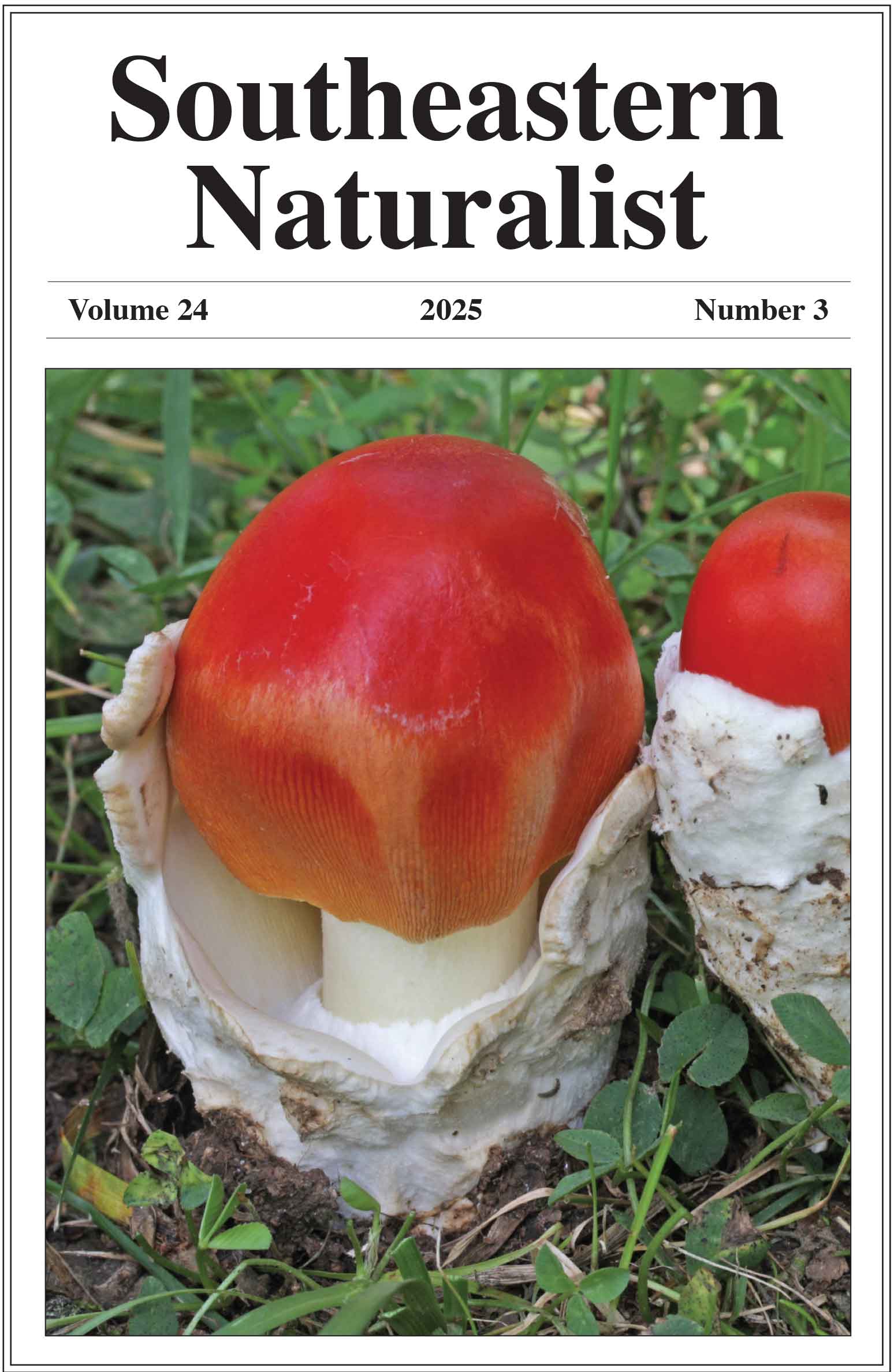Using Camera Traps to Monitor Seasonal and Diel Activity Patterns of Wood Ducks (Aix sponsa) During the Breeding Season
Cindy L. Von Haugg1,*, Robert F. Baldwin2, Beau A. Bauer3, Andrew S. Bridges3, Donald L. Hagan2, Ernie P. Wiggers3, and James T. Anderson1
1James C. Kennedy Waterfowl and Wetlands Conservation Center, Belle W. Baruch Institute of Coastal Ecology and Forest Science, Clemson University, Georgetown, SC 29440.. 2Department of Forestry and Environmental Conservation, Clemson University, Clemson, SC 29631. 3Nemours Wildlife Foundation, Yemassee, SC 29945. *Corresponding author.
Southeastern Naturalist, Volume 24, Issue 3 (2025): 368–379
First published early online: 28 September 2025
Abstract
The reproductive ecology of tree-cavity–nesting Aix sponsa (Wood Duck) has long gone understudied due to the secretive nature of this species and the inability to estimate the vital rates of these populations compared to artificial-cavity–nesting populations. Trapping and monitoring has been successfully used to uncover the behavior of numerous species; however, migratory species add additional difficulty to diagnosing the proper timing of physical-trapping efforts. We used camera traps to gather information about seasonal and diel Wood Duck activity during their prebreeding and nesting seasons in the Southeast to inform future physical-trapping efforts of locally nesting Wood Duck females. We monitored camera-trap sites (n = 41) during January–June 2023 and collected trail-camera images with Wood Ducks (n = 2271 frames) to evaluate seasonal and diel activity patterns of female, male, and hatch year Wood Ducks in coastal South Carolina. Our analyses of female (n = 1641), male (n = 2358), and hatch-year (n = 341) Wood Duck images revealed the sex ratios differed among months, and the highest densities of females occurred during January, February, and May. Our results suggest setting physical traps no earlier than 1 March to increase opportunities to capture locally nesting females. Our analysis of sex ratios also suggest the pre-breeding phase occurred from mid-January to late March; the first nesting attempts occurred from early March to late April, and the second nesting attempts began around late April. Wood Duck (96.5%) and female-specific (96.3%) activity were highest during diurnal periods, suggesting trap-site visits should be avoided at this time to minimize disturbance. Using these results as guidelines for future physical-trapping efforts could greatly improve the successful capture of Wood Duck females during the breeding season, thus increasing our understanding of the reproductive ecology of Wood Ducks.
![]() Download Full-text pdf (Accessible only to subscribers. To subscribe click here.)
Download Full-text pdf (Accessible only to subscribers. To subscribe click here.)
Access Journal Content
Open access browsing of table of contents and abstract pages. Full text pdfs available for download for subscribers.
Issue-in-Progress: Vol. 24( 4) ... early view
Check out SENA's latest Monograph and current Special Issue in progress:













 The Southeastern Naturalist is a peer-reviewed journal that covers all aspects of natural history within the southeastern United States. We welcome research articles, summary review papers, and observational notes.
The Southeastern Naturalist is a peer-reviewed journal that covers all aspects of natural history within the southeastern United States. We welcome research articles, summary review papers, and observational notes.